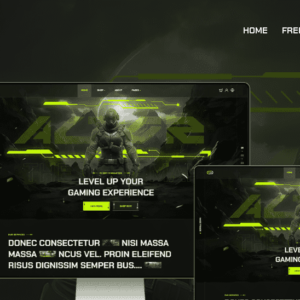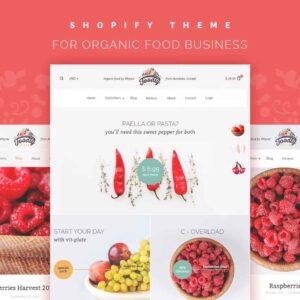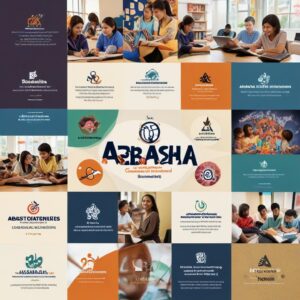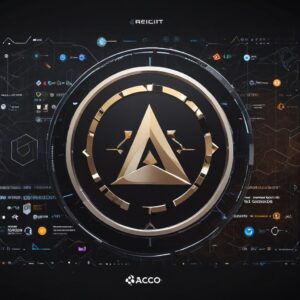
Best Free Prompt to AI Image Generators for Content Creation in 2024
Free Prompt to AI Image Generators
Introduction
Let’s delve into the fascinating world of AI image generators. These innovative tools, powered by artificial intelligence, transform text prompts into stunning visuals. Imagine describing a scene, and within seconds, an AI generator brings it to life. Whether you’re a designer, content creator, or business professional, these tools have a profound impact. In this exploration, we’ll uncover the best free options available in 2024, opening up a realm of creative possibilities.

- Efficiency and Speed: Traditional graphic design can be time-consuming. AI image generators, however, swiftly transform text descriptions into visuals. This efficiency is a game-changer for content creators, allowing them to focus on creativity rather than manual design tasks.
- Creativity Unleashed: AI generators break down creative barriers. They visualize abstract concepts, turning words into captivating images. Writers, marketers, and educators can now convey complex ideas visually, engaging their audiences effectively.
- Consistency: Branding relies on consistent visuals. AI generators maintain uniformity across marketing materials, social media posts, and presentations. This consistency reinforces brand identity and professionalism.
- Accessibility: Not everyone is a skilled designer, but AI democratizes visual content creation. Small businesses, startups, and individuals can produce high-quality graphics without hiring expensive designers.
- Personalization: AI adapts to user preferences. Imagine generating custom illustrations for each blog post or tailoring visuals to specific audiences. Personalized content resonates better with viewers.
- Exploration of Styles: AI can mimic various artistic styles—classic, abstract, or futuristic. Designers can experiment, finding the perfect fit for their message.
- Data Visualization: Complex data becomes digestible through visualizations. AI-generated charts, graphs, and infographics enhance reports and presentations.
DALL-E 3: The Powerhouse
The Artistic Visionary DALL·E 3 refines the process of generating images from textual prompts. It starts with a randomized pixel pattern (akin to “noise”) and then iteratively “de-noises” the image, guided by the input text. The result? Unique, coherent artworks that precisely adhere to your descriptions. Imagine turning words into stunning visuals with unprecedented accuracy and creativity
- Textual Prompts: When you use DALL·E 3, you start by providing a description or idea in text form. For instance, you might say, “A serene forest with bioluminescent mushrooms.”
- Randomized Pixel Pattern: DALL·E 3 begins with a randomized pixel pattern—a canvas filled with visual noise. Think of it as a blank slate.
- Iterative Process: The magic happens during the iterative process. DALL·E 3 refines this noisy image step by step, guided by your input text. It adjusts pixels, shapes, and colors to match your description.
- Unique Artworks: The result is a coherent and unique artwork. It adheres precisely to your prompt. You could get anything from dreamy landscapes to abstract compositions—all generated from your words!
- Accuracy and Creativity: DALL·E 3 is remarkably accurate. It understands nuance and detail better than previous systems. Plus, it pushes the boundaries of creativity, surprising us with its imaginative output.
Visual Excellence and Seamless Integration
DALL·E 3 understands nuance and detail better than its predecessors. When you provide a prompt, it translates your ideas into exceptionally accurate images. Unlike earlier systems, which sometimes ignored words or forced users into prompt engineering, DALL·E 3 delivers contextually relevant visuals. Even with the same prompt, it significantly outperforms DALL·E 2, ensuring your creative vision comes to life.
- Nuance and Detail: DALL·E 3 surpasses its predecessors in understanding nuance and detail. When you give it a prompt (a textual description), it translates your creative ideas into exceptionally accurate images. This means that even subtle nuances in your description are captured faithfully in the generated artwork.
- Contextually Relevant Visuals: Unlike earlier systems, which sometimes struggled with context, DALL·E 3 excels at delivering contextually relevant visuals. It pays attention to the words you provide and ensures that the resulting image aligns coherently with your prompt. This contextual awareness enhances the overall quality of the generated art.
- Outperforming DALL·E 2: Even when given the same prompt, DALL·E 3 significantly outperforms its predecessor, DALL·E 2. The improvements in accuracy, creativity, and relevance mean that your creative vision truly comes to life in the generated images.
DALL·E 3: Bridging Text and Images
DALL·E 3 is an AI model developed by OpenAI that bridges the gap between natural language prompts and visual creativity. It combines the power of language understanding with image synthesis, allowing users to describe scenes, objects, or abstract concepts and receive corresponding images. Let’s explore its applications, safety features, and how it collaborates with Bing Chat.
Applications of DALL·E 3
- Digital Art Creation:
- Artists can use DALL·E 3 as their digital canvas. By providing detailed prompts, they can generate unique and imaginative artwork.
- Imagine describing a “sunset over a cyberpunk cityscape,” and DALL·E 3 brings it to life in pixels.
- Content Development:
- Writers, bloggers, and marketers benefit from DALL·E 3’s visual aids. It enhances articles, social media posts, and videos.
- Describe a “mysterious forest with glowing mushrooms,” and DALL·E 3 provides an evocative image.
- Product Design Visualization:
- Designers can visualize product ideas before prototyping. Describe a product’s features, and DALL·E 3 generates a visual representation.
- Whether it’s a futuristic gadget or a sustainable home appliance, DALL·E 3 helps designers iterate quickly.

Safety Measures and Responsible Usage
- Public Figures and Harmful Content:
- DALL·E 3 declines requests for specific public figures by name. This prevents misuse or harmful content.
- The model’s moderation system ensures responsible usage, protecting against inappropriate or offensive images.
- Bias Mitigation:
- OpenAI actively addresses biases related to gender, race, and other factors. Red team evaluations help identify and rectify potential issues.
- The goal is to create diverse and fair visual outputs that align with user intent.
- Provenance Classifier:
- OpenAI is researching ways to identify AI-generated images. A provenance classifier aims to distinguish between human-created and AI-generated visuals.
- This transparency empowers users to understand the origin of the images they encounter.
Bing Chat: Enhancing Creativity
- Seamless Integration:
- Bing Chat natively incorporates DALL·E 3. Users collaborate with ChatGPT to refine prompts for DALL·E 3.
- Describe what you want to see, and ChatGPT tailors the prompt for optimal image generation.
- Prompt Refinement:
- If an image isn’t perfect, ChatGPT can make tweaks with just a few words. This iterative process ensures users get the desired visuals.
- Adjust lighting, composition, or other details until the image matches your vision.
- Endless Creativity:
- Together, Bing Chat and DALL·E 3 revolutionize visual content creation. They make it accessible, efficient, and endlessly creative.
- Whether you’re a designer, writer, or hobbyist, this collaboration empowers your imagination.
In summary, DALL·E 3 and Bing Chat form a dynamic duo, enabling users to express themselves visually through language. As you explore this creative partnership, remember that responsible usage and ethical considerations are paramount. So go ahead—describe your wildest ideas, and let DALL·E 3 bring them to life!
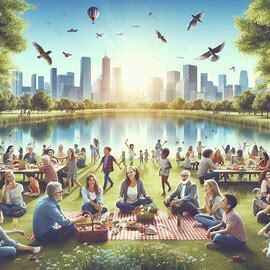
Leonardo AI: A Comprehensive Guide to AI-Powered Art Generation
Leonardo AI is a groundbreaking platform that’s revolutionizing the way we create visual content. By harnessing the power of artificial intelligence, Leonardo AI empowers artists, designers, marketers, and game developers to produce high-quality visuals with unprecedented speed, consistency, and style.
The Core Features of Leonardo AI
- Image Generation Tool:
- Unleashing Creativity: The image generation tool within Leonardo AI allows users to bring their imaginations to life by simply entering a text prompt. The AI then generates a corresponding image based on the description. This feature opens up endless possibilities for artists and designers, as they can experiment with different styles, themes, and concepts without the need for traditional drawing skills.
- Customization and Control: Leonardo AI provides users with a high degree of control over the generated images. They can adjust various parameters, such as the style, resolution, and level of detail, to achieve their desired outcome. This customization capability allows artists to fine-tune their creations and ensure that they align perfectly with their vision.
- AI Canvas:
- A Powerful Editing Tool: The AI Canvas is a versatile editing platform that allows users to modify and enhance their generated images. It offers a wide range of tools, including brushes, pencils, erasers, and filters, that can be used to add details, correct imperfections, and apply artistic effects.
- Seamless Integration: The AI Canvas seamlessly integrates with the image generation tool, making it easy to transition from creating a new image to refining it. This streamlined workflow enhances efficiency and productivity for artists and designers.
- 3D Texture Generation:
- Bringing 3D Models to Life: Leonardo AI’s 3D texture generation feature is a valuable tool for game developers and 3D artists. By uploading a 3D model, users can generate realistic textures that add depth and detail to their creations. This feature saves time and effort, as it eliminates the need for manual texture creation.
- Fine-Tuned Models:
- Specializing in Different Styles: Leonardo AI offers a variety of fine-tuned models, each designed to excel in a specific style or application. For example, some models may specialize in anime, photorealism, or abstract art. This diversity allows users to choose the model that best suits their needs and achieve the desired aesthetic.
- PhotoReal:
- Creating Hyper-Realistic Images: Leonardo AI’s PhotoReal feature is a cutting-edge tool that generates incredibly realistic images. It can be used to create photorealistic portraits, landscapes, and even product images. This feature is particularly valuable for marketing and advertising purposes, as it can help to create highly engaging and persuasive visuals.
The Benefits of Using Leonardo AI
- Accessibility: Leonardo AI is a user-friendly platform that is accessible to both professional artists and beginners. Even those with limited technical skills can create impressive results.
- Speed and Efficiency: The AI-powered tools within Leonardo AI significantly speed up the creative process. Artists can generate and refine images in a fraction of the time it would take to create them manually.
- Quality and Consistency: Leonardo AI produces high-quality images that are consistent and reliable. This is especially beneficial for designers who need to create large quantities of visuals for projects such as websites, social media campaigns, or game development.
- Inspiration and Creativity: By providing a vast array of tools and options, Leonardo AI can inspire artists and designers to explore new creative possibilities. It can help to overcome creative blocks and generate fresh ideas.
A Deeper Dive into Specific Features
Image Generation Tool: The Power of Prompts
The image generation tool within Leonardo AI relies on powerful language models to interpret and understand text prompts. These models are trained on massive datasets of text and images, allowing them to generate highly relevant and visually appealing results. Users can experiment with different prompt styles, levels of detail, and artistic techniques to achieve their desired outcomes.
AI Canvas: A Versatile Editing Platform
The AI Canvas offers a wide range of editing tools and features that allow users to refine and enhance their generated images. Some of the key features include:
- Layers: Users can work with multiple layers to create complex compositions and isolate different elements of their designs.
- Masking: Masking tools allow users to select specific areas of an image for editing, ensuring precise control over their modifications.
- Filters: A variety of filters can be applied to images to achieve different effects, such as blurring, sharpening, and color adjustments.
- Text Tools: Users can add text to their images using a variety of fonts, styles, and sizes.
3D Texture Generation: A Game-Changer for 3D Artists
The 3D texture generation feature within Leonardo AI is a valuable tool for game developers and 3D artists. By analyzing the geometry and topology of a 3D model, the AI can generate realistic textures that complement the model’s shape and appearance. This can significantly reduce the time and effort required to create high-quality 3D assets.
Fine-Tuned Models: Tailoring AI to Your Needs
Leonardo AI’s fine-tuned models are trained on specific datasets, allowing them to excel in particular styles or applications. For example, a model trained on a dataset of anime images may be better suited for generating anime-style artwork. By selecting the appropriate model, users can achieve more consistent and accurate results.
PhotoReal: Pushing the Boundaries of Realism
Leonardo AI’s PhotoReal feature is a testament to the advancements in AI technology. It can generate images that are virtually indistinguishable from real-life photographs. This is achieved through a combination of advanced image generation techniques and a deep understanding of human perception.
The Impact of Leonardo AI on the Creative Industry
Leonardo AI is poised to have a profound impact on the creative industry. It is democratizing access to high-quality visual content, empowering artists and designers to create stunning visuals regardless of their skill level. As the technology continues to evolve, we can expect to see even more innovative features and applications emerging from Leonardo AI.
A Deeper Dive into Specific Use Cases
Game Development: Creating Immersive Worlds
Leonardo AI can be a valuable asset for game developers. It can be used to generate concept art, character designs, and environment textures. This can help to speed up the development process and create more visually appealing games.
Marketing and Advertising: Creating Engaging Visuals
Leonardo AI can be used to create eye-catching visuals for marketing and advertising campaigns. It can be used to generate product images, social media graphics, and website banners.
Art and Design: Exploring New Creative Possibilities
Leonardo AI can inspire artists and designers to explore new creative possibilities. It can be used to generate unique and unexpected images that can be used as a starting point for further artistic exploration.
Education and Training: Teaching AI Concepts
Leonardo AI can be used to teach students about AI and machine learning. It can be used to demonstrate the capabilities of AI and to inspire students to explore the field further.
Scientific Research: Visualizing Complex Data
Leonardo AI can be used to visualize complex scientific data, making it easier to understand and interpret. For example, it can be used to create visualizations of climate models or genomic data.
Fashion and Design: Creating Unique Patterns and Designs
Leonardo AI can be used to generate unique patterns and designs for fashion and textile industries. It can help to create one-of-a-kind pieces that stand out from the crowd.
Architecture and Interior Design: Visualizing Design Concepts
Leonardo AI can be used to visualize architectural and interior design concepts. It can help to create realistic renderings of proposed designs, allowing clients to see how they will look in real life.
Film and Animation: Creating Special Effects and Backgrounds
Leonardo AI can be used to create special effects and backgrounds for films and animations. It can help to create visually stunning scenes that would be difficult or impossible to achieve with traditional techniques.
Social Media Content Creation: Generating Engaging Visuals
Leonardo AI can be a valuable tool for social media content creators. It can be used to generate eye-catching images and graphics that will help to increase engagement and reach.
E-commerce: Creating Product Images and Visuals
Leonardo AI can be used to create high-quality product images and visuals for e-commerce websites. This can help to improve conversion rates and increase sales.
Graphic Design: Creating Logos, Branding, and Marketing Materials
Leonardo AI can be used to create logos, branding materials, and other graphic design elements. It can help to streamline the design process and create visually appealing assets.
Content Creation: Generating Images for Blogs and Articles
Leonardo AI can be used to generate images for blogs and articles. This can help to make content more visually appealing and engaging.
Personal Projects: Exploring Creativity and Hobbyist Interests
Leonardo AI can be used for personal projects, such as creating art, designing games, or exploring creative hobbies. It can help to bring ideas to life and experiment with different styles and techniques.
The Future of Leonardo AI
As AI technology continues to advance, we can expect to see even more innovative features and applications emerging from Leonardo AI. Some potential future developments include:
- Real-time image generation: The ability to generate images in real time could open up new possibilities for interactive applications and live streaming.
- Enhanced 3D capabilities: Leonardo AI may expand its 3D capabilities to include features such as 3D model generation and animation.
- Integration with other creative tools: Leonardo AI could be integrated with popular design software, such as Adobe Photoshop or Illustrator, to provide a more seamless workflow for artists and designers.
- Ethical considerations: As AI technology becomes more powerful.

Imagen 2: A Revolutionary Leap in AI-Generated Imagery
Understanding Imagen 2
Imagen 2 is a state-of-the-art text-to-image generation model developed by Google DeepMind.
It’s a significant advancement in the field of artificial intelligence, capable of creating highly realistic and diverse images based on textual descriptions. This technology is integrated into Google Gemini, a powerful AI assistant, and is also available through an experimental project called ImageFX1.
Key Features and Capabilities
- Lifelike Images: One of Imagen 2’s most impressive features is its ability to generate images that closely resemble real-world photography. This is achieved by training the model on a massive dataset of images, allowing it to learn the intricate patterns and details that characterize natural scenes.
- Customizability: Imagen 2 offers a high degree of customization, enabling users to experiment with different prompts and styles. Whether you’re looking for a photorealistic image of a mountain landscape or a whimsical illustration of a fantastical creature, Imagen 2 can generate it. 1. Imagen 2 – Google DeepMind deepmind.google
- Integration with Gemini: The integration of Imagen 2 into Google Gemini provides a seamless user experience. By simply typing a text description, users can instantly generate corresponding images within the Gemini interface.
- Stability and Image Quality: Imagen 2 has been designed to be both stable and reliable, producing consistent results even when faced with complex or ambiguous prompts. The generated images are generally of high quality, with a level of detail and realism that is often indistinguishable from human-created artwork. 1. Imagen 2 on Vertex AI is now generally available | Google Cloud Blog
How Imagen 2 Works
At its core, Imagen 2 is a deep learning model that uses a technique called diffusion. This involves starting with a random noise pattern and gradually refining it until it resembles the desired image. The model learns to associate specific textual descriptions with corresponding visual features, allowing it to generate images that match the given prompt.
Applications and Potential
Imagen 2 has a wide range of potential applications, including:
- Creative Arts: Artists and designers can use Imagen 2 to generate new and inspiring ideas, or to quickly create visual assets for their projects.
- Education: Educators can use Imagen 2 to create engaging and informative visuals for their students.
- Product Design: Product designers can use Imagen 2 to visualize new concepts and explore different design possibilities.
- Marketing and Advertising: Marketers can use Imagen 2 to create eye-catching visuals for their campaigns.
- Scientific Research: Scientists can use Imagen 2 to visualize complex data or to generate hypothetical scenarios.
- Gaming and Entertainment: Game developers can use Imagen 2 to create unique and immersive worlds, while filmmakers can use it to generate concept art or special effects.
- Medical Imaging: Imagen 2 can be used to generate synthetic medical images for training algorithms or for visualizing patient data.
- Architecture and Urban Planning: Architects and urban planners can use Imagen 2 to visualize proposed designs or to study the impact of different development strategies.
- Fashion and Design: Fashion designers can use Imagen 2 to create new designs or to visualize different styling options.
- E-commerce: E-commerce businesses can use Imagen 2 to generate product images or to create personalized visual experiences for their customers.
- Accessibility: Imagen 2 can be used to create visual representations of textual information, making it more accessible to people with visual impairments.
- Art History and Preservation: Imagen 2 can be used to restore damaged or lost works of art, or to create digital replicas of historical artifacts.
- Industrial Design: Engineers can use Imagen 2 to visualize and prototype new product designs.
- Social Media: Imagen 2 can be used to create engaging and shareable content for social media platforms.
- Entertainment: Imagen 2 can be used to create personalized entertainment experiences, such as customized video games or movies.
- Healthcare: Imagen 2 can be used to develop new medical treatments or to improve diagnostic accuracy.
- Finance: Imagen 2 can be used to analyze financial data or to create new financial products.
- Agriculture: Imagen 2 can be used to monitor crop health or to develop new agricultural technologies.
- Transportation: Imagen 2 can be used to design new vehicles or to improve transportation infrastructure.
- Climate Change: Imagen 2 can be used to visualize the impacts of climate change or to develop new strategies for mitigating its effects.
Challenges and Future Directions
While Imagen 2 is a significant breakthrough, there are still some challenges to overcome. For example, the model can sometimes struggle to accurately capture the nuances of certain concepts or styles. Additionally, there are concerns about the ethical implications of AI-generated imagery, particularly in terms of copyright infringement, deepfakes, and the potential for AI to perpetuate biases or stereotypes.
In the future, we can expect to see further advancements in text-to-image generation technology, with models that are even more capable of producing realistic and creative images. As AI continues to evolve, Imagen 2 and similar models will likely play an increasingly important role in our lives.
Additional Considerations
- Ethical Implications: As AI-generated imagery becomes more sophisticated, it’s important to consider the ethical implications of its use. This includes issues such as copyright infringement, deepfakes, and the potential for AI to perpetuate biases or stereotypes.
- Accessibility: Ensuring that AI-generated imagery is accessible to everyone is crucial. This means making sure that the technology is compatible with assistive devices and that it’s used in a way that is inclusive and respectful.
- Economic Impact: The development and widespread use of AI-generated imagery could have a significant impact on the economy. It could create new job opportunities in fields such as AI research, development, and application, while also disrupting traditional industries such as photography and graphic design.
- Privacy and Security: The use of AI-generated imagery raises concerns about privacy and security. For example, there is a risk that AI could be used to create deepfakes that are used to spread misinformation or harm individuals.
- Environmental Impact: The training and deployment of AI models like Imagen 2 can be energy-intensive. Addressing the environmental impact of AI is a growing concern. 1. The Green Dilemma: Can AI Fulfil Its Potential Without Harming the Environment?
- Interoperability: As AI-generated imagery becomes more widely used, there will be a need for standards and protocols to ensure interoperability between different models and platforms.
- Regulation: The development and use of AI-generated imagery may require new regulations to address ethical concerns and to protect consumers.
- Human Creativity: While AI-generated imagery can be a powerful tool, it is important to recognize the value of human creativity and ingenuity. AI should be used to complement human skills, not to replace them. 1. The human edge: Enhancing soft skills as essential partners in the AI age | UNLEASH
- Social Impact: AI-generated imagery could have a significant impact on society. For example, it could be used to create more inclusive and diverse media representations, or to promote social justice and equality.
- Cultural Implications: The use of AI-generated imagery raises questions about the nature of creativity, the role of technology in society, and the relationship between humans and machines.
- Global Implications: AI-generated imagery has the potential to bridge cultural divides and promote understanding between different societies. However, it is important to ensure that AI is developed and used in a way that is inclusive and respectful of all cultures.
The Future of Imagen 2 and AI-Generated Imagery
Imagen 2 represents a significant milestone in the development of AI-generated imagery. Its ability to create highly realistic and diverse images based on textual descriptions has the potential to revolutionize a wide range of industries. As this technology continues to evolve, it will be important to carefully consider its ethical implications and ensure that it is used responsibly and beneficially.
In the future, we can expect to see further advancements in AI-generated imagery. Models may become even more capable of understanding and generating complex visual concepts, and they may be able to create images in a wider range of styles and media. As AI continues to develop, it is likely that AI-generated imagery will become an increasingly integral part of our lives.
StableStudio: The Customizable AI Artist
Key Points:
- Open-source: This means it’s freely available and can be modified by anyone.
- Text-to-Image: You can describe an image in words, and it will create a visual based on your description.
- Customization: You have a lot of control over the output, from the style of the image to the specific details.
- Local Inference: It can run on your own computer, ensuring privacy and speed.
How to Use:
- Editing Images: You can change existing images by adding, removing, or modifying elements.
- Chat Interface: A future feature that will allow you to interact with the AI more naturally.
Adobe Firefly: AI for Creative Professionals
Key Points:
- Integrated into Adobe Apps: It works seamlessly with popular tools like Photoshop, Illustrator, and Lightroom.
- Text-to-Image: Similar to StableStudio, but with a focus on high-quality and photorealistic images.
- Generative Features: Offers tools for creating shapes, removing backgrounds, and more.
How to Use:
- Create Images: Generate new images based on text prompts.
- Modify Existing Images: Use features like “Generative Remove” to clean up photos.
In essence, both tools are powerful AI-driven platforms for creating and modifying images. StableStudio offers more customization and flexibility, while Adobe Firefly is designed for seamless integration into the Adobe Creative Cloud ecosystem.
I need Services with …
- Wordpress Service
- Shopify Service
- Youtube Service
- Cv and resume Service
- Linkedin Service
Latest Post
-
Top Daily Taste WordPress Theme: Best Choice for Your Site
$ 15Original price was: $ 15.$ 13Current price is: $ 13. Add to cartAdd to WishlistAdd to Wishlist -

Get Hostinger’s Low-Cost Hosting Now!
Don’t miss out on affordable hosting with Hostinger – click now to bring your website online at an unbeatable price!



